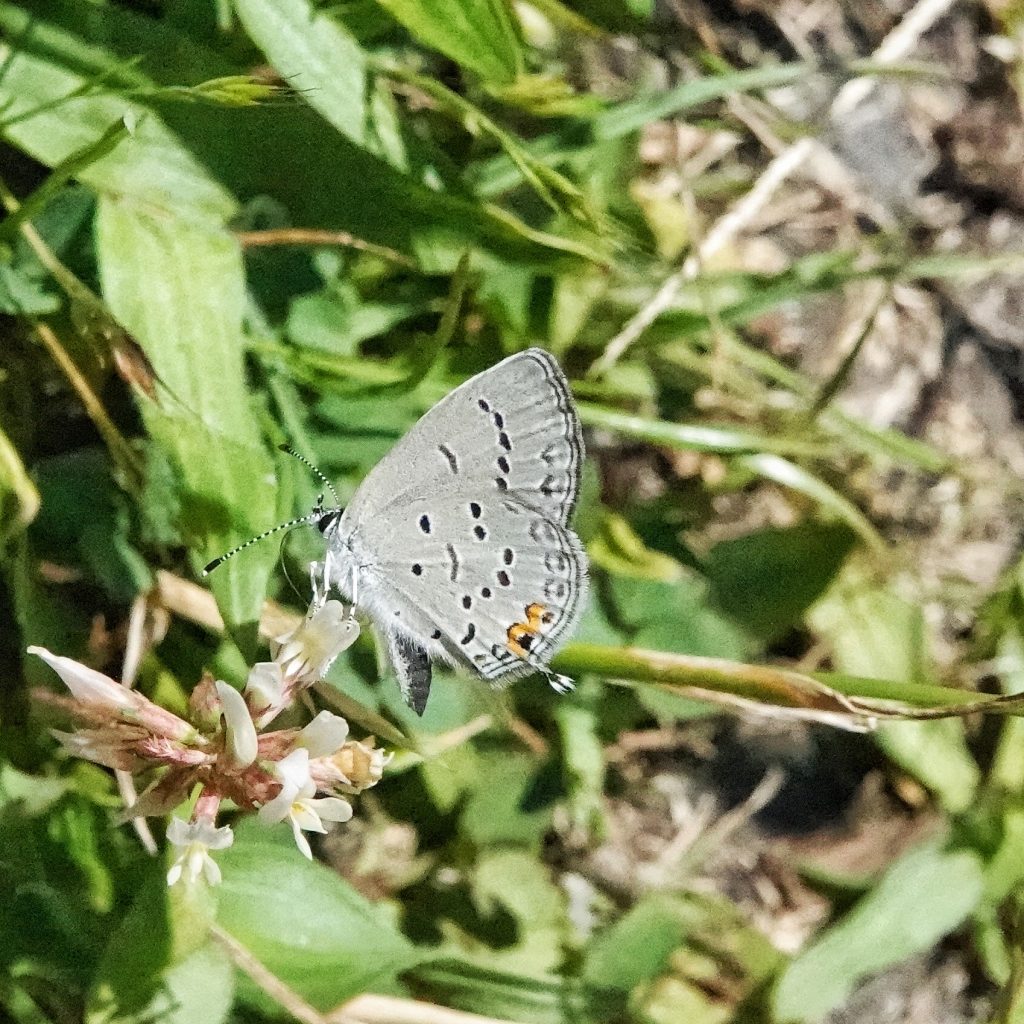
Last Thursday I finally reencountered some members of a small, local population of Eastern Tailed Blues. To explain why this was so exciting for me I am once again going to quote shamelessly from my blog post ‘Evolution of a Recreational Naturalist’. “Back in 2011, one of the first places I went a’netting afield was along La Framboise Rd, one of the roads leading to Vancouver Lake in Clark County, Washington. There is a section where one can access a weedy dike that runs between two wetlands, and leads to a scrubby, wooded area. I had often birded this area because it’s varied habitats have a nice diversity of birds. But I had also frequently seen both butterflies and dragonflies there, so I pointed my bicycle that way, a decision that ultimately, albeit years later, led to crossing something off my bucket list. And sure enough, within fifty yards I had seen members of each order. Which of course I failed to catch. Possession of a net does not imply the ability to use it successfully. But finally I did catch a small blue butterfly, and managed to successfully transfer it from the net to the mayonnaise jar. And then out with the book, ‘Butterflies of Cascadia’ by Robert Michael Pyle.”
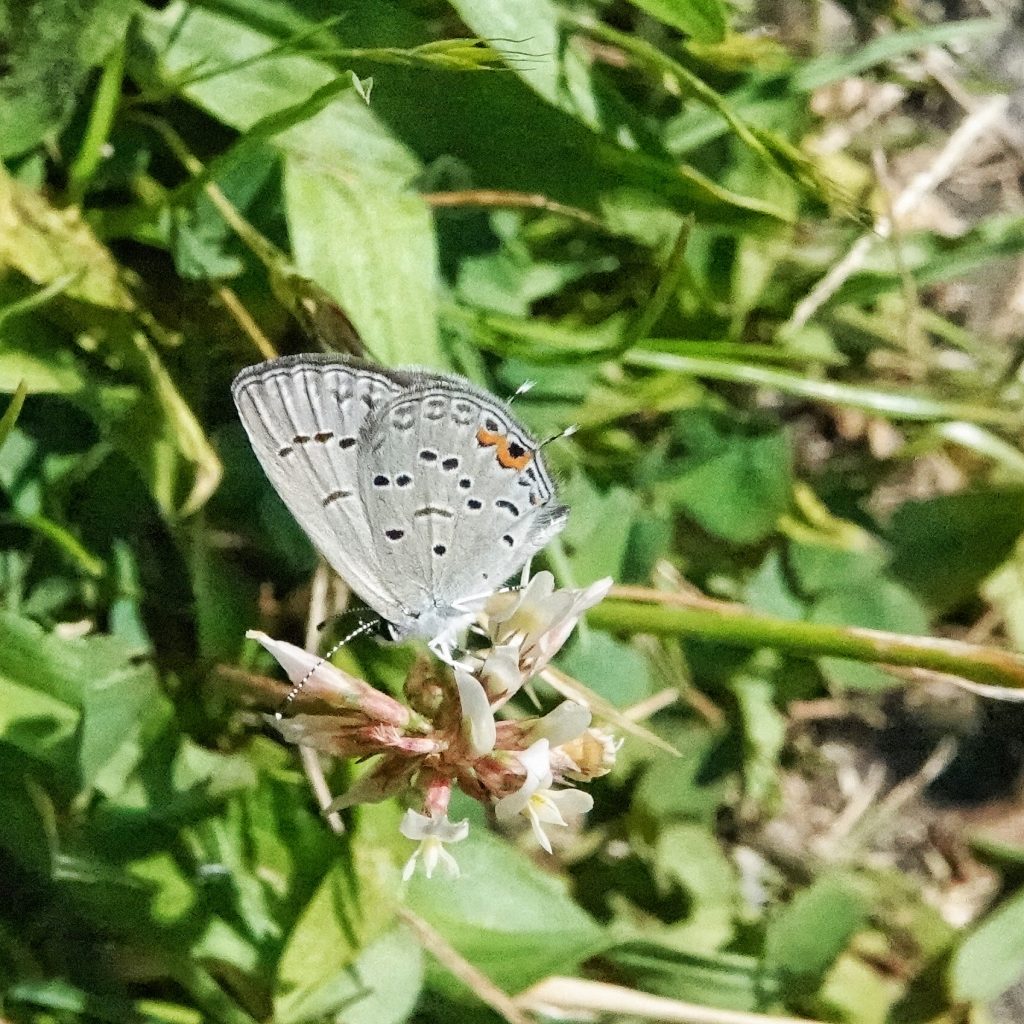
“The first thing I noticed was the tiny tails at the bottom of the wings, and the first butterflies I found with tiny tails were the hairstreaks. But none of them were blue above. And neither was the tailed copper. Then I found the entries for the tailed Blues. The butterfly I had in the jar sure looked like the photos I was seeing of Eastern Tailed Blues (Cupido comyntas), but they weren’t shown as being in western Washington, though there are known colonies on the eastside, especially in the northeastern corner of the state, and they were known from Columbia County, Oregon, which is actually visible from where I was, across the floodplain and on the other side of the Columbia River. On the other hand the Western Tailed Blues (Cupido amyntula) were shown as being common throughout western Washington and Oregon. The markings on the ventral side of the wings were somewhat intermediate in heaviness, and the second orange lunule was not especially distinct. So, lacking the courage of my convictions, I told myself that rookies don’t make discoveries, called it a Western, and let it go.”
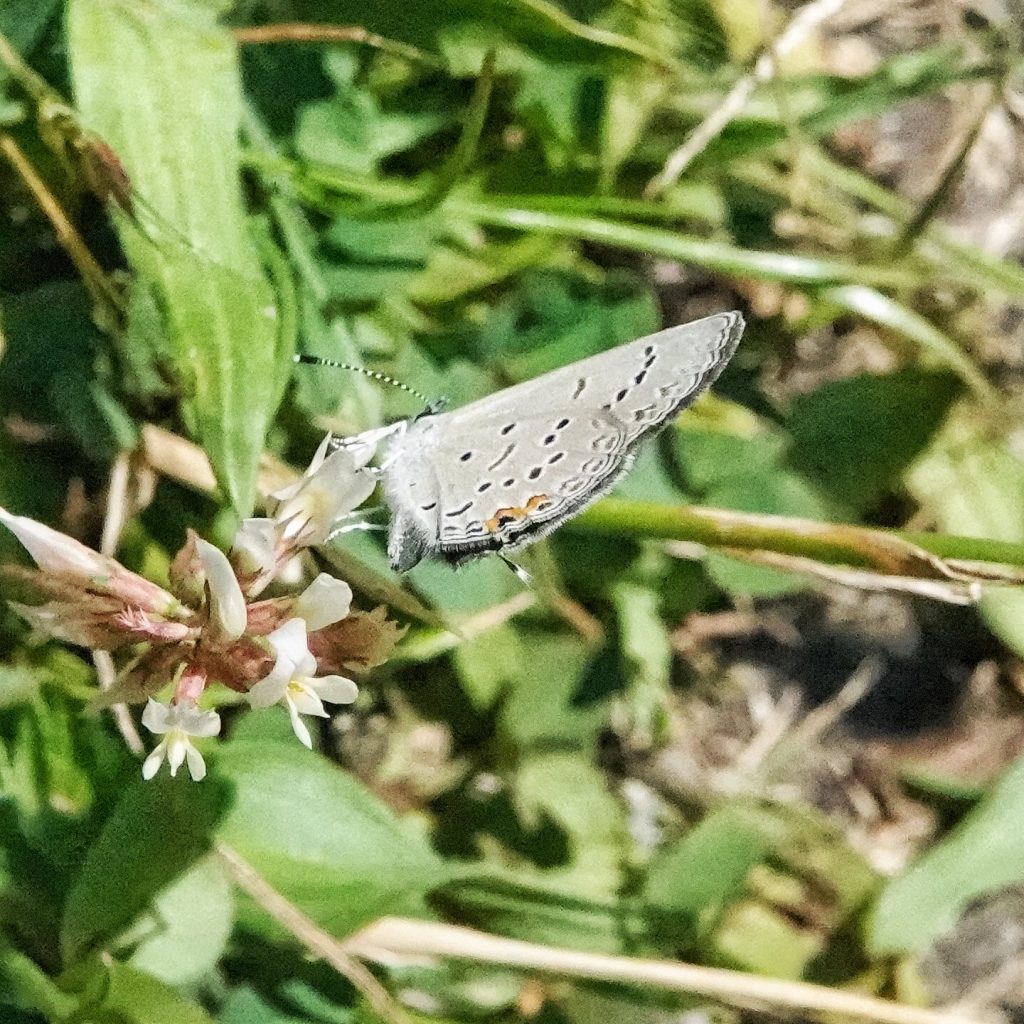
“Fast forward 7 years. I’m much better at all of this recreational naturalist stuff, and Robert Michael Pyle and Caitlin LaBar come out with ‘Butterflies of the Pacific Northwest’, an updated version of Cascadia. Flipping through my copy I notice that the Eastern Tailed Blues still had not been documented in western Washington, and the authors make a point of noting that oddity. So, on the next available sunny day, I grab my net and head back to that weedy little dike. And I manage to find and net one, and get some decent photos. Now, I must confess, I was still not 100% positive it was an Eastern. And I’ve been gobsmacked a few times by incorrect identifications. But I posted it on Facebook, in Butterflies and Moths of the Pacific Northwest, and in a short time Norbert Kondla confirmed that it was an Eastern Tailed Blue. I then posted it to a northwest lep forum, and Caitlin LaBar, and Jonathan Pelham, who is the records keeper for the state, confirmed that it was indeed a first record for western Washington. Now, I know this isn’t a huge range expansion, but it was something to be noted, and it shows that you don’t have to be an expert to add to the store of knowledge.”
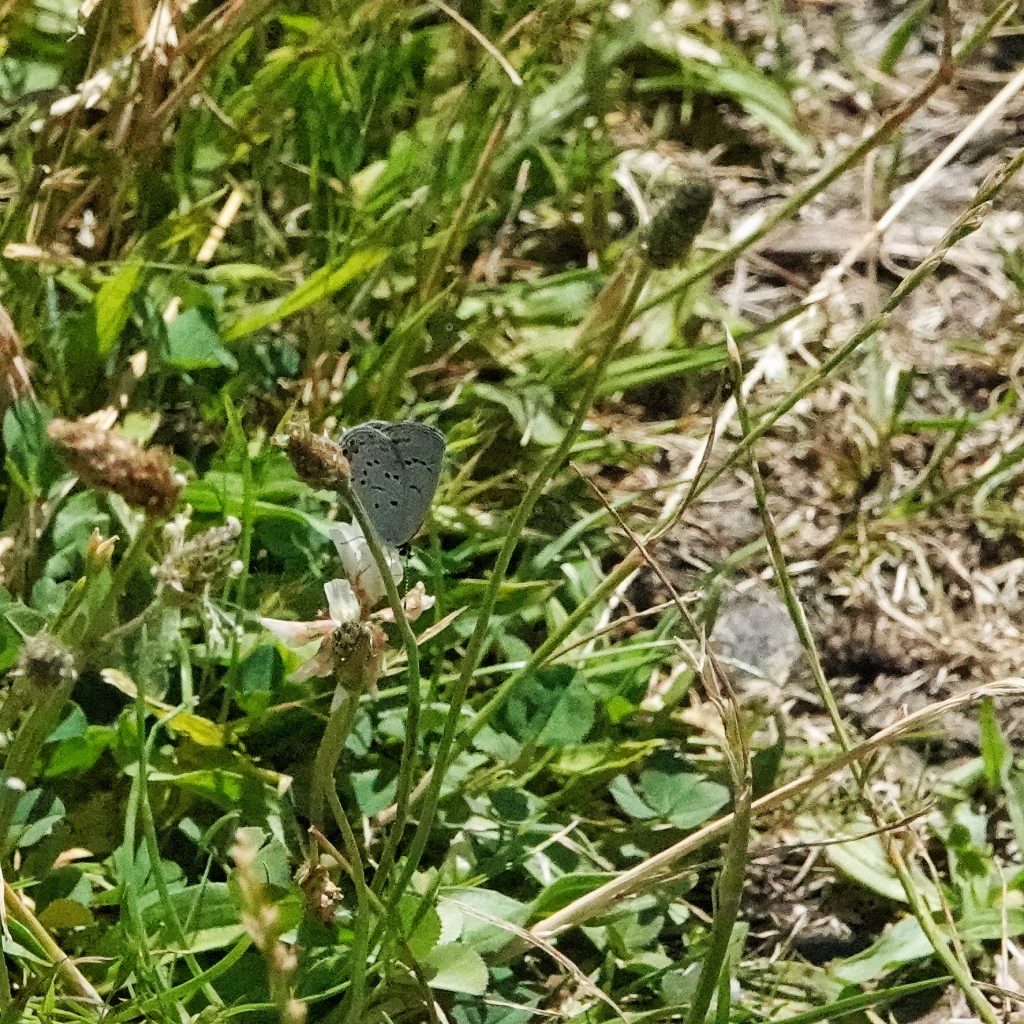
But the other reason I mention it is because shortly thereafter I received an email from Bob Pyle, who was at the time doing a Washington Big Year for butterflies, asking if he could go butterflying with me so I could show him that location. Now I’m not really a ‘hero worship’ sort of guy, but I’d read just about everything Bob Pyle had ever written, and I really admired the beauty and wisdom and eloquence of his prose, as well as a level of sheer reasonableness that seemed like it could possibly change minds, to the point that each time I passed his house on the way to Ilwaco (I recognized the location where it had to be when reading ‘Sky Time in Gray’s River, and confirmed it by recognizing Powdermilk, his Honda Civic, in the driveway) I had to convince myself that even stopping just to say ‘Thank you’ would be an invasion of his privacy (okay, maybe I am a bit of a fanboy). Anyway, that email led to the bucket list item I mentioned before, an afternoon afield with Robert Michael Pyle! Unfortunately we didn’t find any Cupido comyntas that day, although he did get one there a month or so later after I had alerted him to the presence of a second brood. But still it was a fantastic afternoon, because Bob Pyle is just as warm, engaged, eloquent, humorous, reasonable, passionate, and knowledgeable in person as he is in his books. And let me mention knowledgeable again, because the man is an absolute fountain of information as regards the natural history of butterflies.”
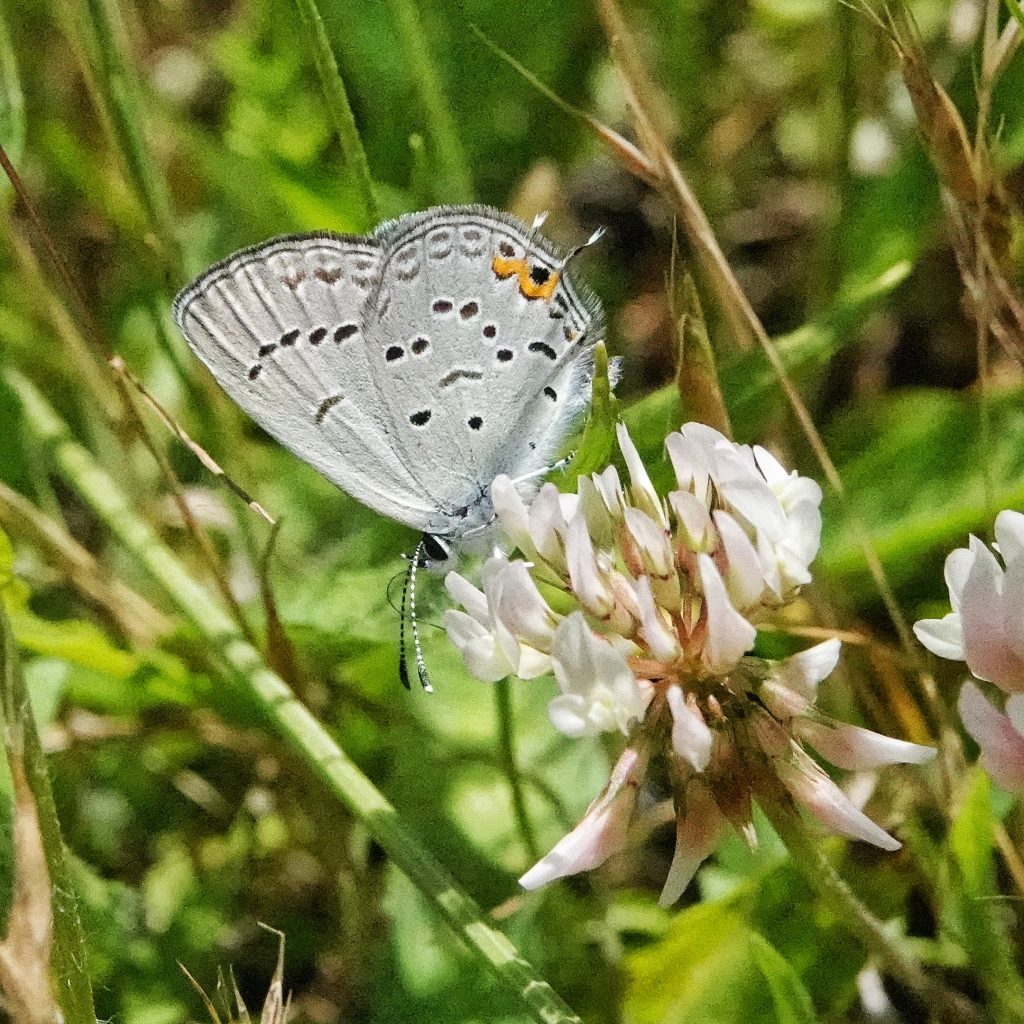
Whether Eastern Tailed Blues are native to the PNW or not is a matter of speculation. From ‘Butterflies of the Pacific Northwest’ (Pyle/LaBar; 2018)- “ It has been thought a possible agricultural introduction in the West (Warren doubts this based on subtle differences from eastern types); if so, it has been here for most of a century: Stanley G. Jewett Jr. found it in several Oregon locations in the 1930s, and we have one anonymous 1906 record.” In ‘Butterflies of British Columbia’ (Guppy/Shepard; 2001) they say: “Washington and Oregon authorities (pers. comm) have speculated that the species was brought in by nursery stock. BC populations, however, are found in natural riparian situations with, in the case of the Flathead population, little or no human disturbance. This would indicate that the species is native to the Pacific Northwest. The isolated populations most likely represent remnants of a much larger preglacial or immediate postglacial distribution, similar to the distribution of the Dione Copper in the upper Columbia River drainage.” And Art Shapiro says “Like many Central Valley butterflies, this has been accused of being an introduction from somewhere else–but there is no good reason for thinking that it is. (We have done the molecular genetics which, alas, is uninformative.) The fact that it occurs widely and happily in disturbed habitats (in this case, annual grassland, riparian habitats and tule marsh) and often uses naturalized host plants contributes to the notion.”Everes comyntas | Art Shapiro’s Butterfly Site
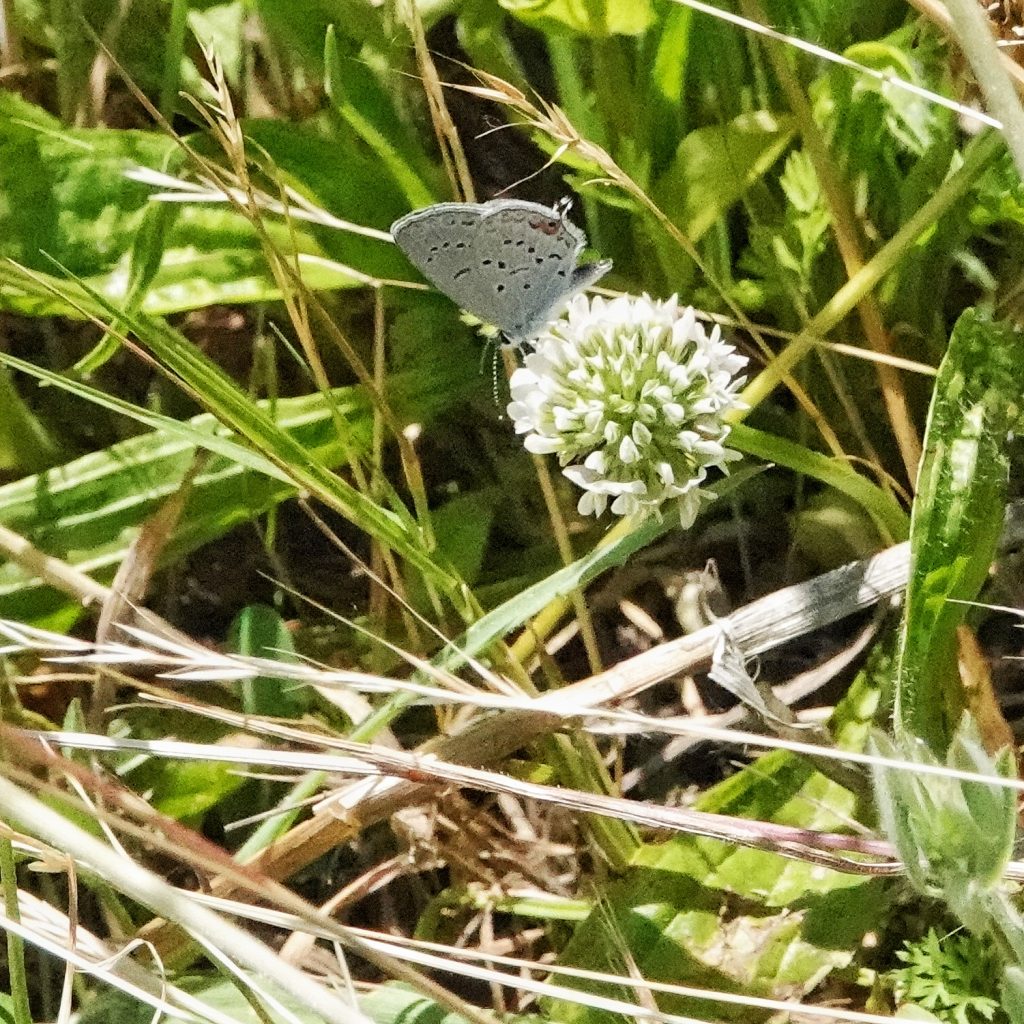
These beautiful members of the family Lycaenidae may have a wider presence in western Washington than previously thought, because not only are they quite small (wingspan usually a little less than an inch), but they are relatively weak flyers that stay fairly close to the ground (which, if they are in fact expanding their range, may be why they were found in western Oregon but not across the broad, open expanse of the Columbia River) and are easily missed by casual observers. Keith Brady, with whom I communicated quite a bit in the summer of 2021 when he was hunting the Vancouver Lake population, reported that in August of that year he found another group of them at Ridgefield NWR, about 15 miles north of those that I, and ultimately Keith, had found. And, though it may have just been a matter of good timing, I found at least 4 times as many of these as I’d ever seen there on any given day before.
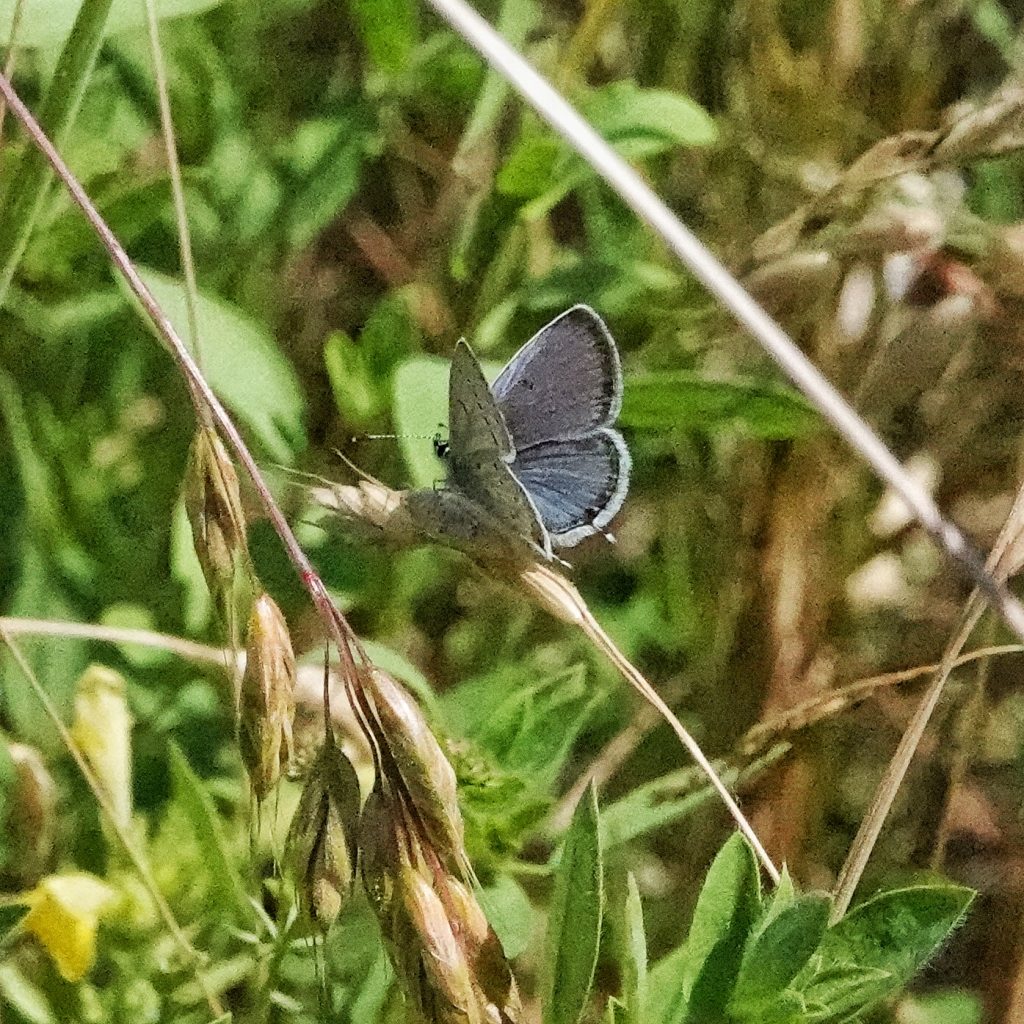
There seems to be some disagreement as to whether these should be in the genus Cupido or Everes, but unfortunately I cannot find a discussion delineating the points for either case. I’ve chosen to go with Cupido, because that is the way it is listed on Lycaenidae of the Americas 23-VI-2023, the Butterflies of America site that purportedly has the most up-to-date taxonomy.
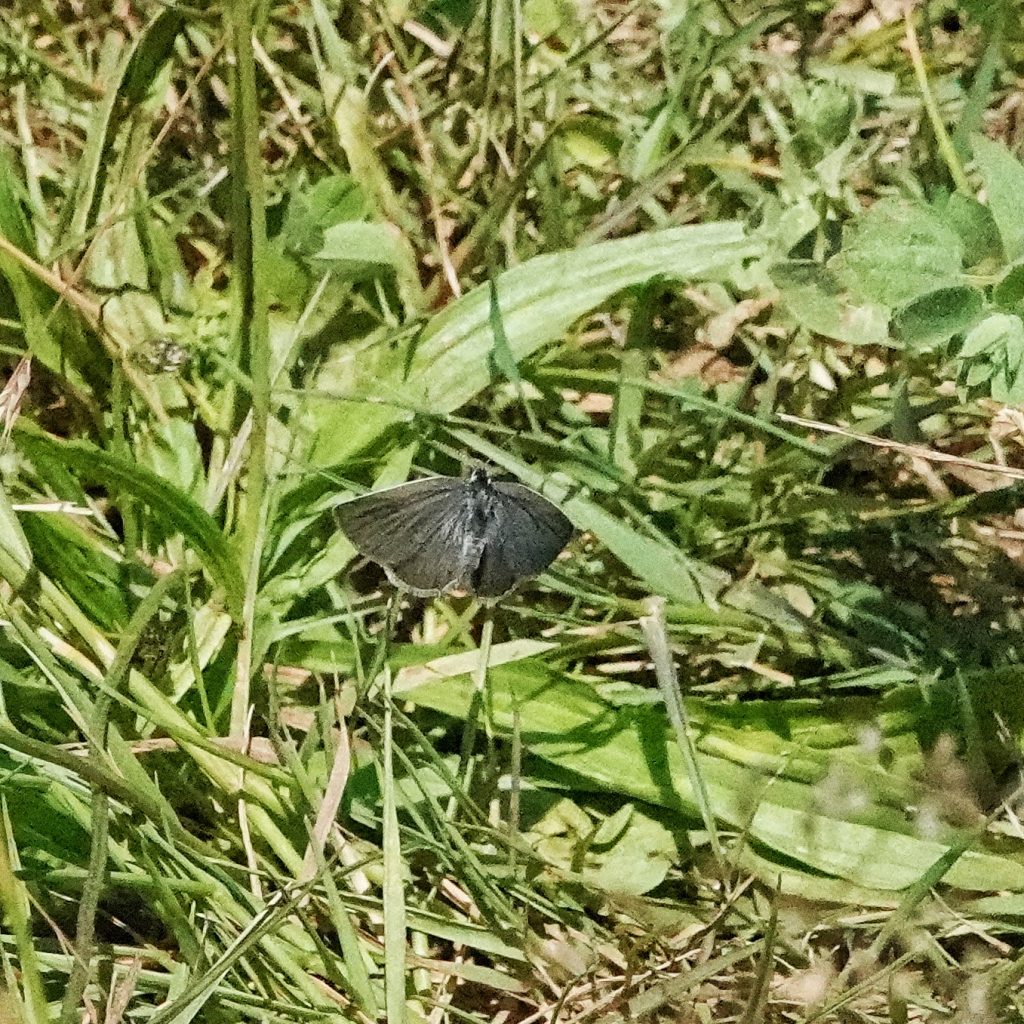
Description– “[From Ferris and Brown 1981; Scott 1986; Opler and Wright 1999; Glassberg 2001; Pyle 2002] Forewing 1.1-1.4 cm. Tailed. Uppersurface of male iridescent blue, usually one orange spot at base of tail; female brown, with two orange spots at base of tail. Undersurface of hindwing pale gray with distinct rows of black spots, black bar at end of cell, 2 larger orange spots on outer margin (one at base of tail).” Eastern Tailed-Blue – Montana Field Guide
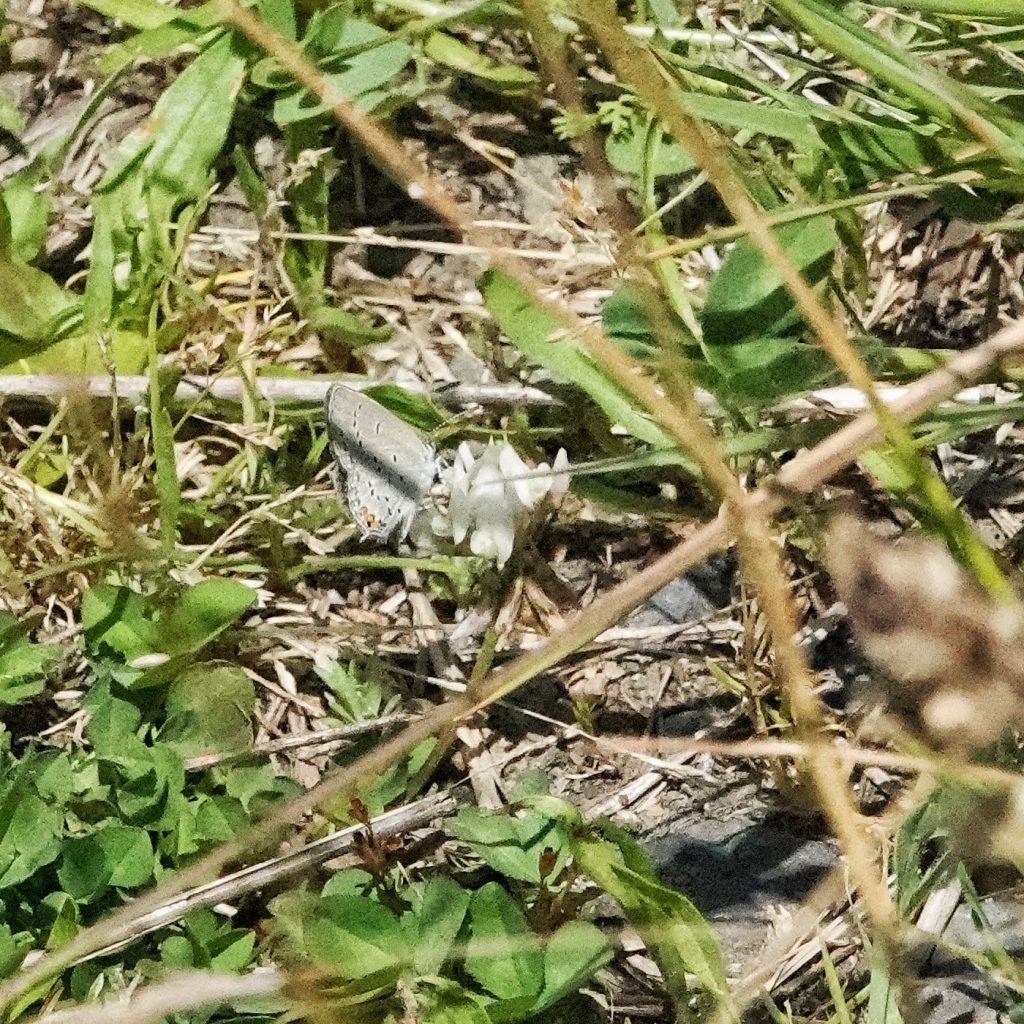
Similar species– “Western Tailed Blue (Cupido amyntula) tends to be larger, have fewer wing markings, and be paler beneath. It occurs throughout most of the western half of North America. (1) C. amyntula often has only one orange spot on ventral HW near tail, as opposed to the 2-3 orange spots found on C. comyntas, but this may not always be a reliable field mark.” Species Cupido comyntas – Eastern Tailed-Blue – Hodges#4361 – BugGuide.Net
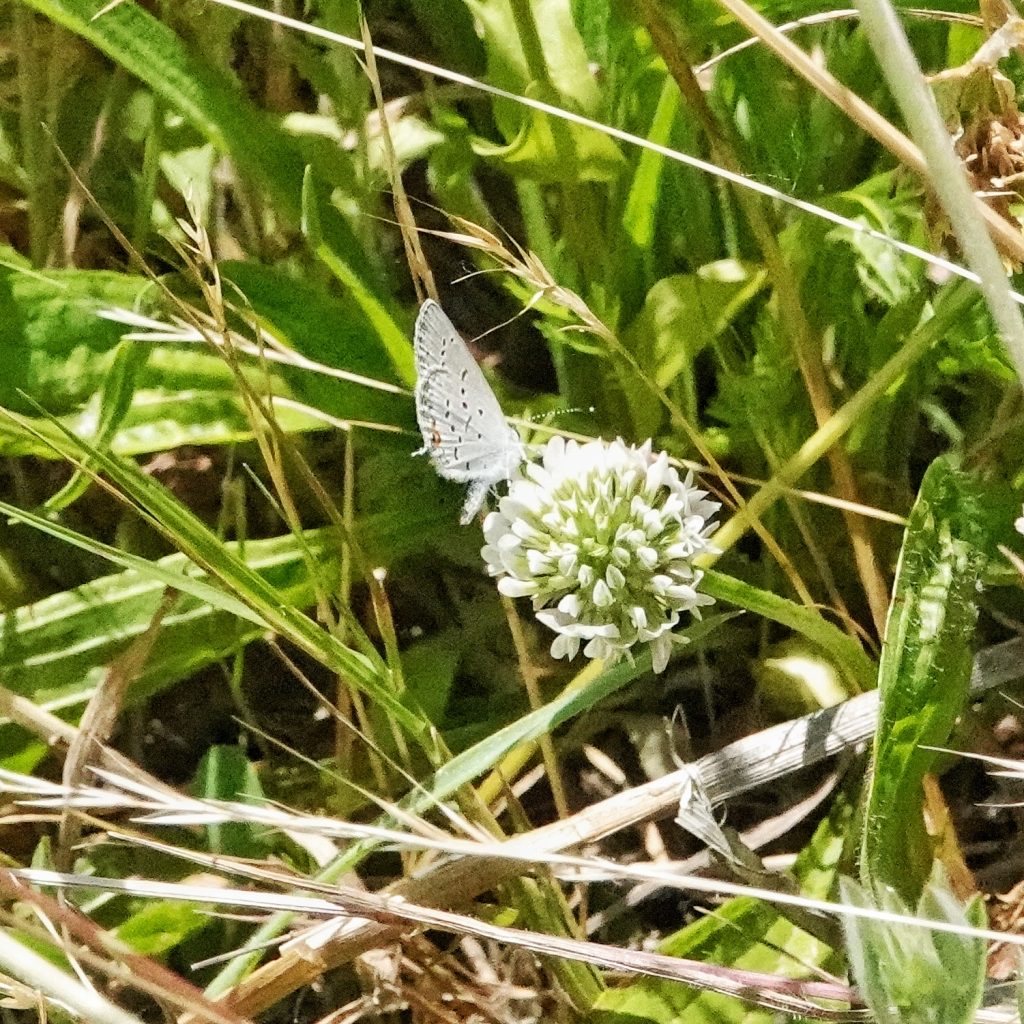
Habitat– “Open weedy sites, lowland riparian areas, vacant lots, canals, fallow fields, riverbanks, moist meadows, woodland clearings (Scott 1986; Opler and Wright 1999; Glassberg 2001; Pyle 2002).” Eastern Tailed-Blue – Montana Field Guide
Range– Widespread in central and eastern North America; in the west they are found in Colorado, and several states west of the Rockies; in the PNW they are known from southwest, north central, and northeast Washington, most of western Oregon and sparsely in eastern Oregon, the panhandle of Idaho and possibly into Montana, central to northeast California, and southeastern BC.
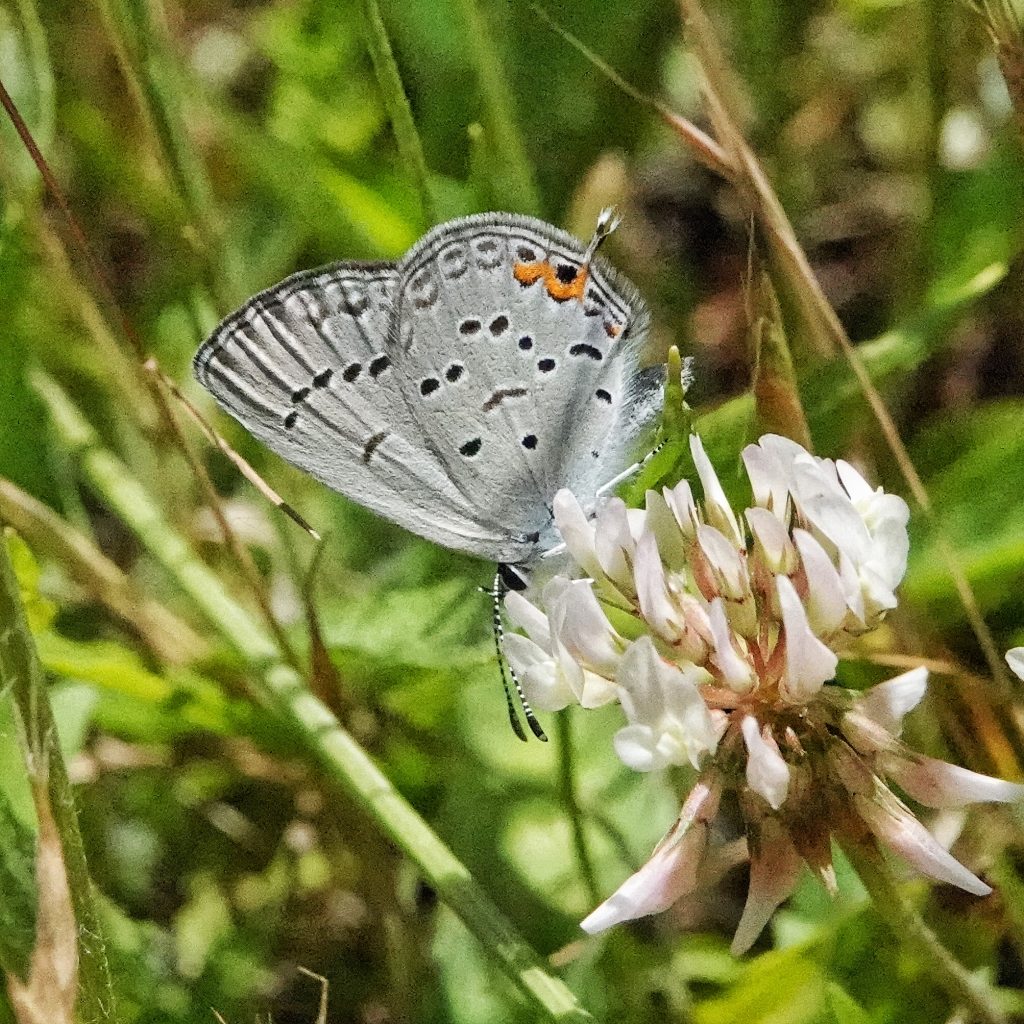
Eats– “Larval food plants diverse, include Astragalus, Baptisia, Desmodium, Galactia, Lotus, Lathyrus, Lespedeza (several species), Lupinus, Medicago, Melilotus, Phaseolus, Trifolium (several species), and Vicea (several species) (Scott 1986, 1999, 2006; Warren 2005; James and Nunnallee 2011). Adults feed on flower nectar (including Ammannia, Arnoglossum, Asclepias, Bolonia, Cardamine, Ceanothus, Cercis, Cicuta, Cirsium, Claytonia, Coreopsis, Crotalaria, Dalia, Delphinium, Erigeron, Eryngium, Eupatorium, Euthamia, Fragaria, Geranium, Lespedeza, Lindernia, Lobelia, Lotus, Ludwigia, Lycopus, Medicago, Melilotus, Nothoscordum, Oxalis, Phyla, Polygonum, Potentilla, Pycanthemum, Ratibida, Rudbeckia, Scrophularia, Solidago, Symphyotrichum, Trifolium, Triodanus, Teucrium, Verbena, Veronicastrum, Vicea, Zizia), blood, and mud (Scott 1986, 2014; Tooker et al. 2002).” Eastern Tailed-Blue – Montana Field Guide; I thought it was interesting that all of the Cupido comyntas I saw the other day were along the only section with substantial amounts of Melilotus, even though the white lawn clover that seemed their favorite nectar plant were abundant along the entire route I walked- made me think that Melilotus may have been their preferred larval host, at least in that area.
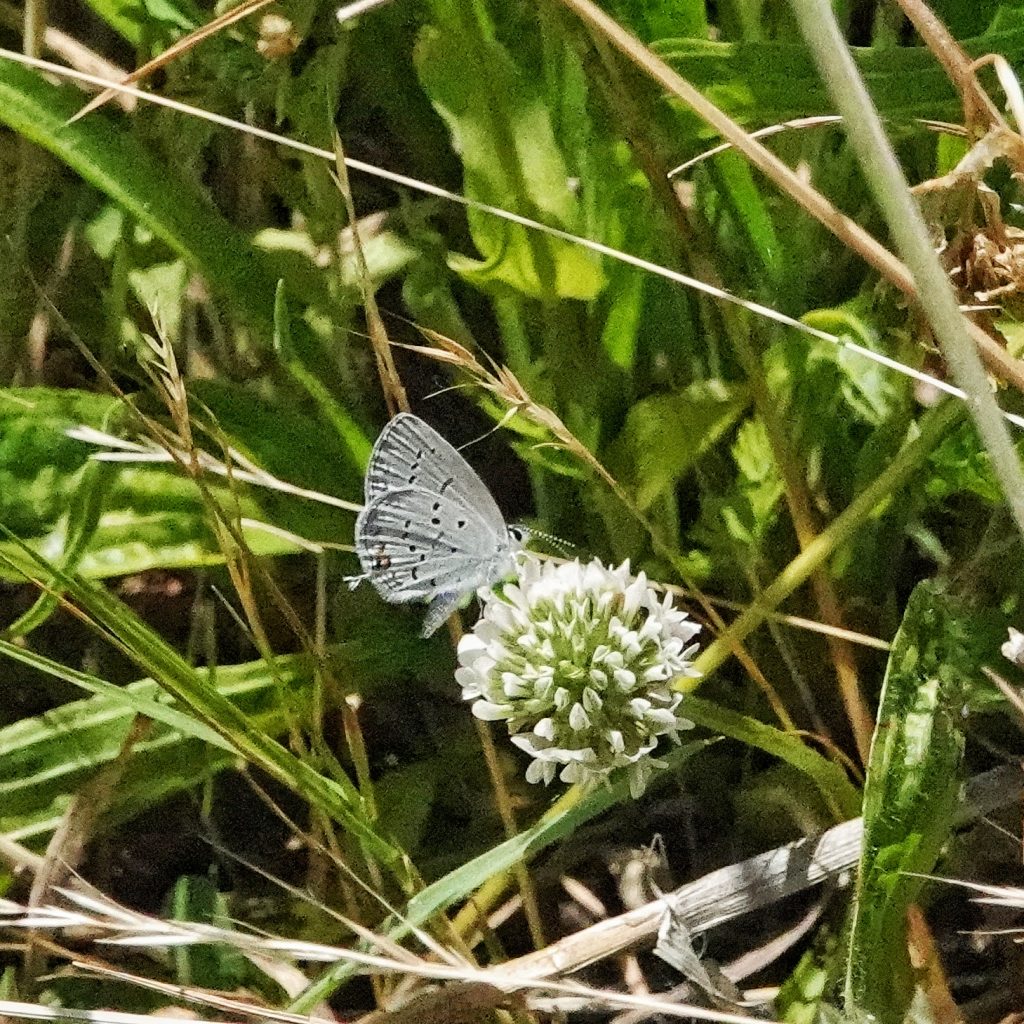
Eaten by– Presumably any insectivores which can capture them; “Cupido comyntas has a mutualistic association with ants. The caterpillars of this species secrete a “honeydew” from their abdomen. This liquid is rich in sugars and proteins. The liquid feeds the ants, and in return the ants protect the caterpillars against any possible predators. Additionally, when C. comyntas senses a potential predator, it will rub its hindwings together to divert the predator from its vulnerable foreparts. (Stokes and Stokes, 1991; Tveten, 1996)” ADW: Cupido comyntas: INFORMATION
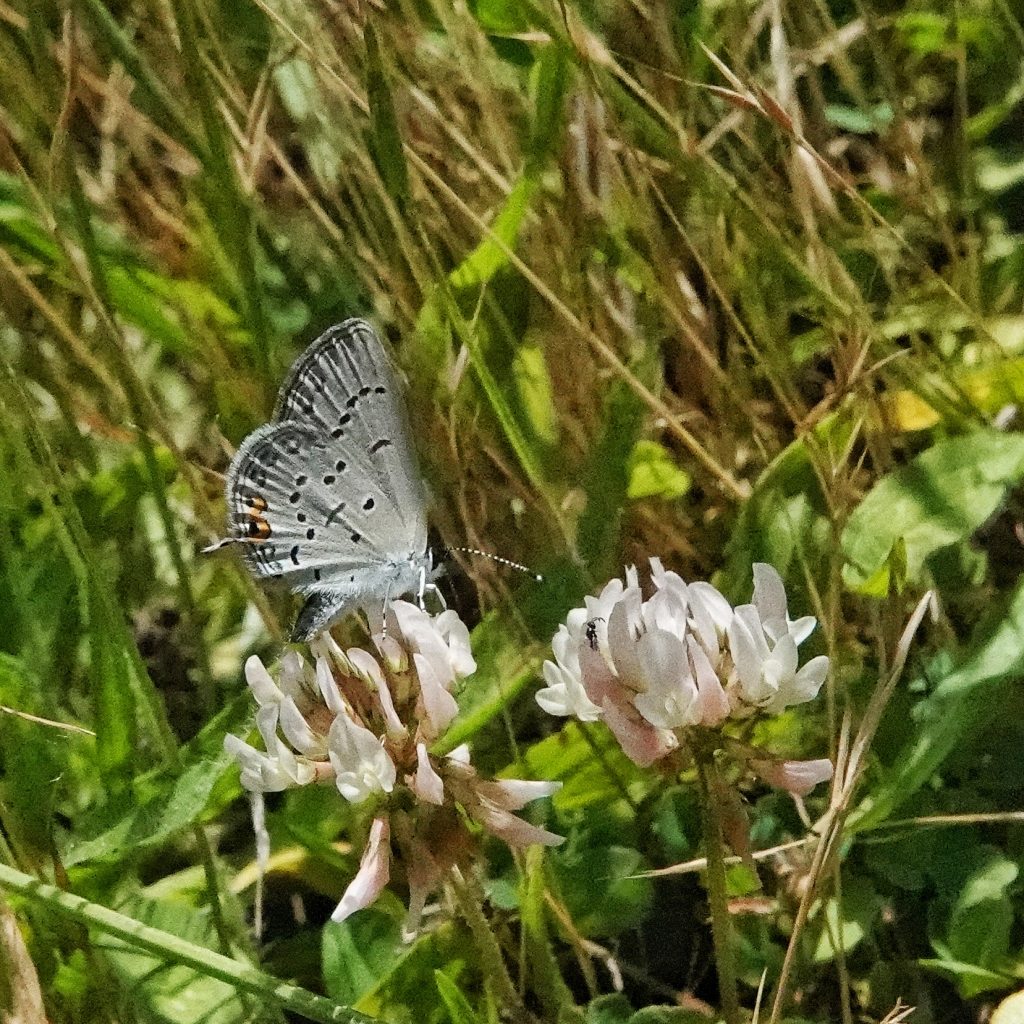
Adults active– “Early April to early August in Oregon and Washington (Pyle 2002), mid April to mid-June and July to September in Oregon (Warren 2005), mid-June to mid-July in British Columbia (Guppy and Shepard 2001).”
Life cycle– “Eggs are laid singly on flowers and young leaves; two or more generations per year; overwinters as a mature larva, often inside a seedpod.” Species Cupido comyntas – Eastern Tailed-Blue – Hodges#4361 – BugGuide.Net ; “Males patrol near the host plants during daylight hours. Females lay eggs on flower buds; caterpillars eat buds, flowers, and seeds. The caterpillar hibernates, pupating the following spring. Although most Lycaenids do not perch with open wings, Eastern Tailed-Blues sometimes bask with their wings at a 45 angle.” Eastern Tailed-Blue Cupido comyntas (Godart, [1824]) | Butterflies and Moths of North America
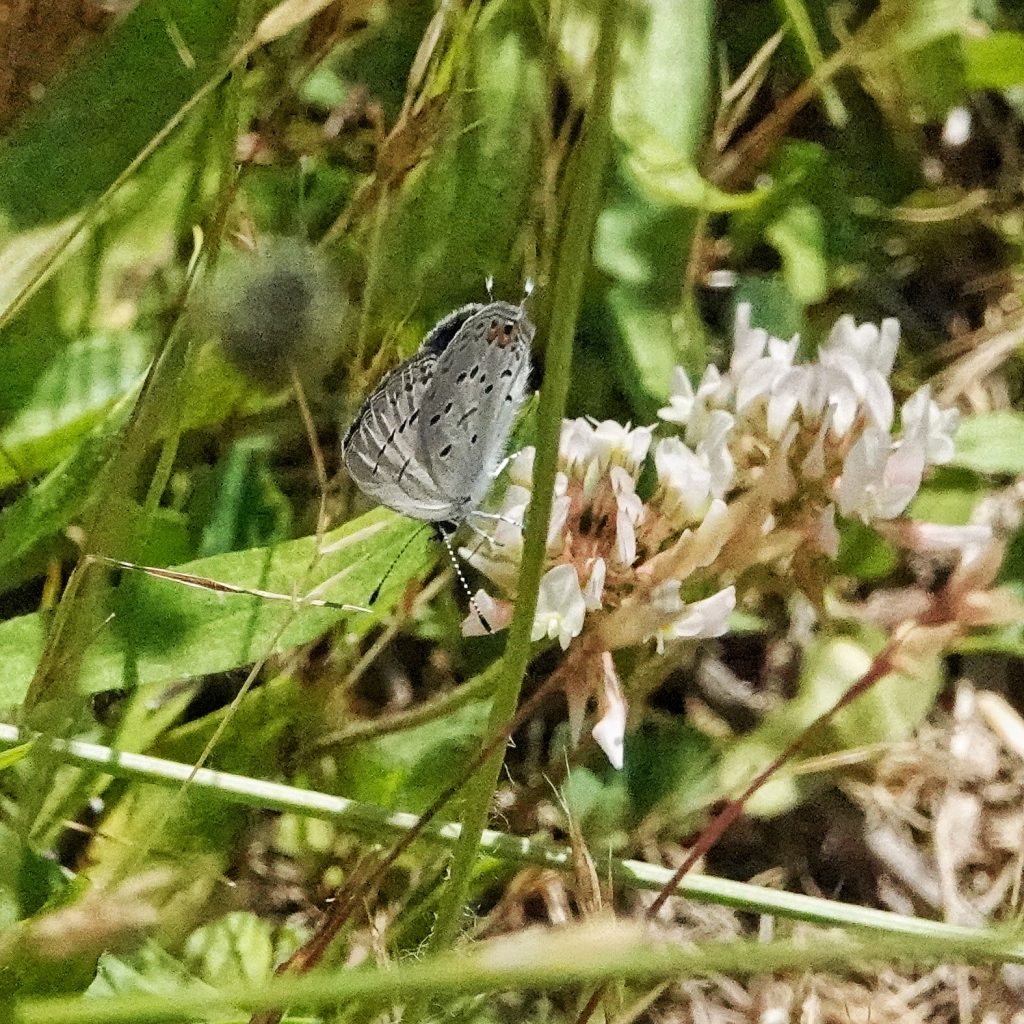
Etymology of names– Cupido was the Roman god of desire/erotic love, though what, if anything, this has to do with a tailed butterfly is unclear. The meaning of the specific epithet comyntas is also unclear, though it should be noted that it shares ‘-mynt-‘ with C. amyntula, which “could be derived either from Amyntula, a dependent king of the Romans in Asia Minor, or from Amyntes, a dynastic name of the Macedonians.”; ‘Butterflies of British Columbia’ (Guppy/Shepard; 2001).
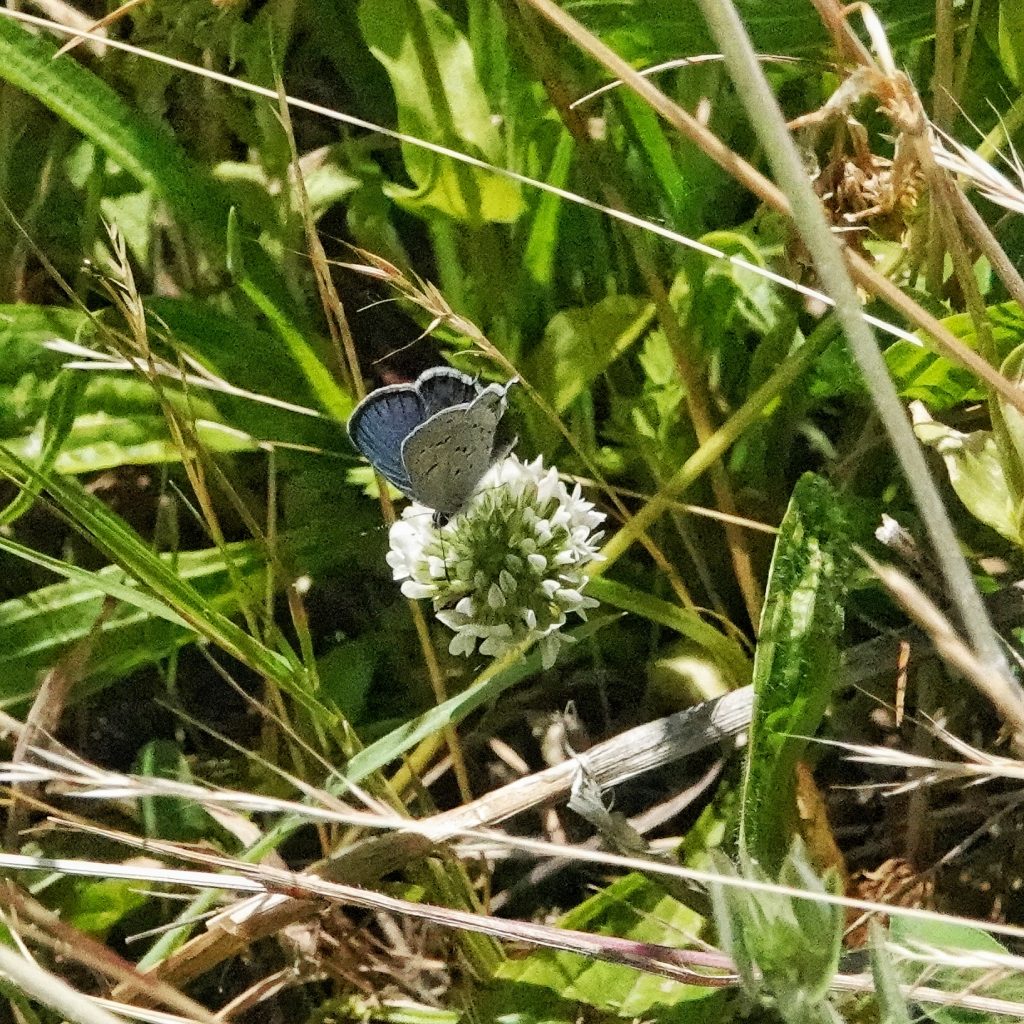
Species Cupido comyntas – Eastern Tailed-Blue – Hodges#4361 – BugGuide.Net
Eastern Tailed-Blue Cupido comyntas (Godart, [1824]) | Butterflies and Moths of North America
Everes comyntas | Art Shapiro’s Butterfly Site
ADW: Cupido comyntas: INFORMATION
Eastern Tailed-Blue – Montana Field Guide
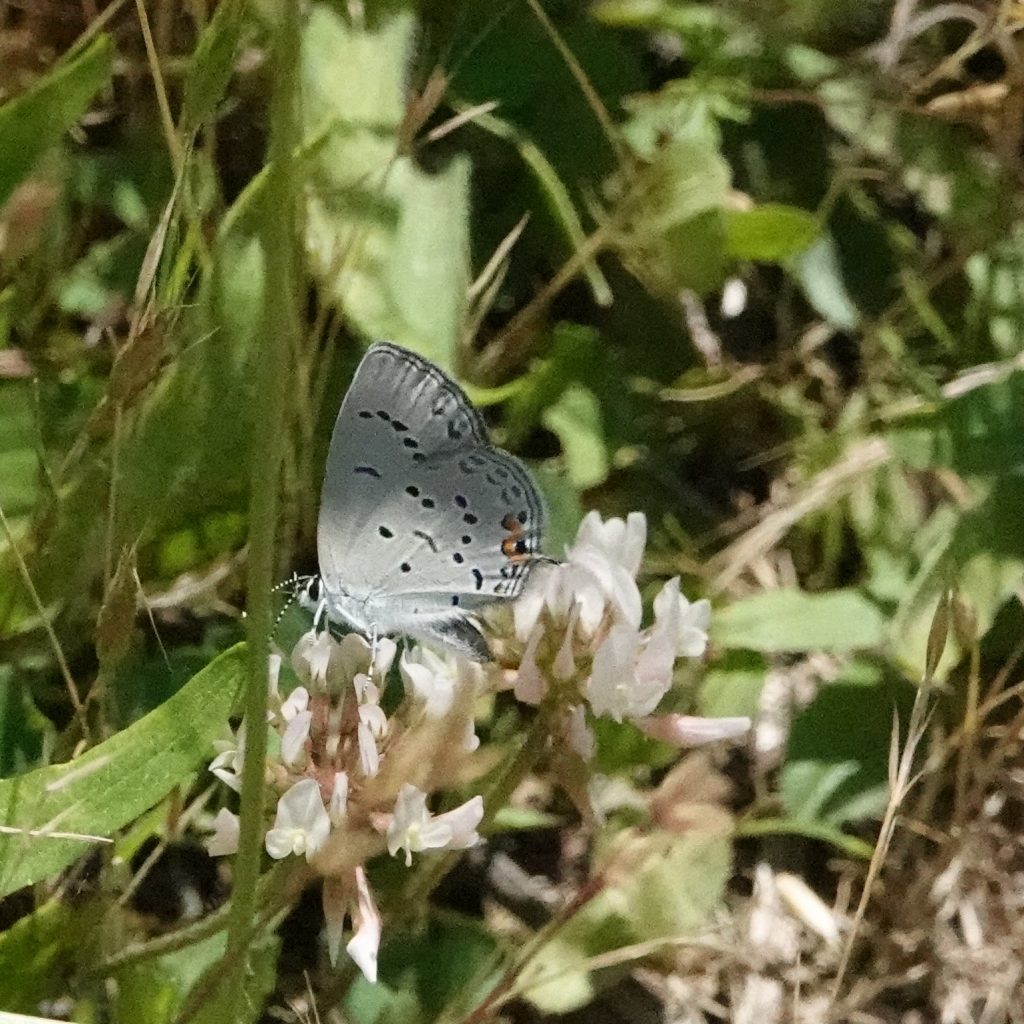
How thrilling to spend a day with someone like that! David James signed my copy of “Life Histories of Cascadia Butterflies” after I heard him speak. Lepidopeteritsts, from my sample size of three, seem to be cool people.
Biologists in general seem to be pretty cool people- friendly, curious, open, giving, with big picture ideals.